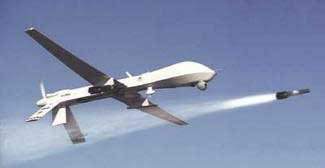Beyond the headlines surrounding the passing of Nelson Mandela lies another story. Before overseeing the historic transition of power heralding majority rule in South Africa, Mandela led Umkhonto we Sizwe, the militant wing of the African National Congress which was labeled a terrorist organization by the United States. The Central Intelligence Agency is suspected to have played a role in his arrest, having invested more resources in countering the African National Congress and other anti-apartheid movements than did South Africa’s own security services. It devotes a similar level of attention today to Pakistan, Yemen, and Somalia, where it has deployed drones to eliminate targets who are suspected of terrorism based on their patterns of behavior.
The United States Government’s public justification for drone warfare was defended by the current CIA Director and then top Presidential counterterror aide John Brennan, who argued that drone strikes are legal, ethical, and wise. The first two of these points are up for debate, but using targeted strikes against suspected terrorists is widely considered to be wiser, safer, and less expensive than attempting to capture suspects and bring them to justice. Brennan noted that the primary purpose of these strikes is not to punish targets for past actions, but to “mitigate an actual ongoing threat.” It is likely that the threat Mandela presented to one of the United States’ Cold War allies would have easily passed Brennan’s threat mitigation test for using drone strikes.
If the “ongoing threat” of Nelson Mandela and Umkhonto we Sizwe were mitigated through drone warfare, the world would have lost a monumental force for justice and reconciliation. Majority rule would have likely been delayed. Although Mandela was already a prominent nationalist figure and common sense indicates that martyring him would have been catastrophic for the apartheid government, the possibility of the death penalty for Mandela lingered over the Rivonia trial and was only narrowly averted. Officials in the apartheid government wanted him dead, and the ease and speed of extrajudicial drone killings would have provided a convenient path towards that objective. Therefore, it is also likely the strike would have been carried out with the full support and cooperation of the South African government.
Passing the United States’ minimal tests for executing suspects via Hellfire missiles, as well as fulfilling the wishes of the South African government and many officials in the United States’ government, it is very likely that Mandela would have been targeted and killed by drone strike if the technology were available at the time. Thankfully, this was not the case, and we are all fortunate for it.
However, today’s governments often do have the power to condemn suspects to death without trial by classifying them as enemy combatants, as the United States has routinely done with minimal uproar or surprise. While the lack of transparency surrounding the United States’ targeted killings makes these figures impossible to verify, the Bureau of Investigative Journalism’s running tally of reported drone strikes estimates that since 2004, United States drones have killed between 2,812 to 4,061 people in Pakistan, Yemen and Somalia. Anywhere from 437 to 1,022 were civilians, including 173 to 205 children.
The peaceful passing of Nelson Mandela should be a time to rethink John Brenner’s accepted wisdom of targeted killings and examine the effects of the Obama administration’s strategy of employing them to deal with perceived threats. Mandela emerged from apartheid as a renowned leader and voice for reconciliation. The drone strategy has been responsible for silencing would-be voices for peace, notably those of the Ali Jaber family members who were incinerated by drone missile while attempting to meet with members of Al Qaeda to dissuade them from violence. There was no effort to determine who was present at the meeting and no acknowledgement of the error from the Obama administration, only an apology phone call from a Yemeni official. This case does not exist in isolation, evidenced by the many botched strikes found throughout the 2012 Stanford/NYU report, Living Under Drones. These attacks include a Hellfire missile strike which targeted a bus depot and killed 42 people, many of them civilians.
It is unconscionable that the same administration which heaps praise upon the memory of Nelson Mandela shows this disregard for human life. The next time a politician or official lines up to honor his legacy, they should reconsider their role in stamping out the legacies of the future.

